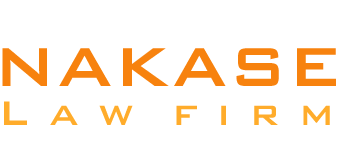Introduction
You need to establish four things in order to successfully file a defamation lawsuit in California:
- That a false remark concerning a supposed fact about you was made by someone;
- That a third party was the recipient of the statement (published);
- That the statement’s maker acted carelessly, recklessly, or purposefully; and
- That your reputation suffered because of the remarks.
These four points are part of the elements of defamation that every plaintiff needs to prove in California courts.
Two forms of defamation are recognized by California law:
Libel, in which the remarks are expressed through writing or a different form; and
Slander is when someone says anything verbally.
1. Libel and Slander
False statements that harm your reputation are included under the broad definition of defamation under California law. Verbal statements are considered slander. It is libel if it is written down.
Statutory standards governing slander, in contrast to libel, specify which kinds of oral remarks are considered harmful. Slander is defined as “a false & unprivileged publication, verbally spoken” that performs any or all of the following in accordance with the California Civil Code:
- Accuses you of a crime;
- Implies that you have a sickness that is contagious, infectious, or abhorrent;
- Tends to negatively impact you in relation to your trade, business, profession, or workplace;
- Implies that you are impotent or lacking in chastity; or
- This naturally results in harm.
2. Elements
There are five important elements of defamation stated in the California law to be proved in order to assert a defamation action.
- A deliberate release of a factual statement;
- That is untrue.
- That is not privileged.
- That is prone to harm or “particular damage” by nature; and,
- At the very least, the defendant was negligent in posting the statement.
These elements of defamation form the legal foundation for building/contesting a defamation case.
Below is a discussion of these elements.
A. Purposeful Release of a Fact Statement
Defamation is considered a tort that is deliberate under California law, thus the defendant must’ve planned the particular publication. A publication is an exchange of information with a third party who is aware of:
- The statement’s defamatory meaning, and
- How it applies to you.
Generally speaking, there isn’t defamation if the defendant expresses an opinion rather than a truth. Nonetheless, if an expression of opinion is founded on false information, it can still be part of the elements of defamation.
The trial court has the legal authority to decide whether a statement conveys fact or opinion. The jury must determine how the assertion was interpreted because it could have both a harmless and a defamatory interpretation.
Keep in mind that using the “precise words” of the defamatory comment in the papers is the best course of action when bringing a slander or libel lawsuit.
B. False publications
It is a complete defense against a defamation lawsuit if the individual who made the claimed statement was speaking the truth.
It is your responsibility to demonstrate untruth in situations involving public persons or issues of public interest. The burden of proof is with the defendant in proceedings involving issues of entirely private concern.
It is not necessary for a defendant to prove that each sentence in an asserted defamatory remark is true. If the defendant demonstrates that the charge’s main allegations are true, that is enough.
C. Unprivileged Publications
For a statement to be enforceable as defamation, it has to be unprivileged. If the defendant does not have the authority to put forward a statement, it is not privileged: One way to avoid a defamation case is to demonstrate privileged communication.
For instance, journalists are entitled to write on and discuss topics of public interest and their opinions do not meet the elements of defamation. Unless they behaved with genuine malice, they shouldn’t be held accountable if they misrepresent the facts.
Communications delivered by a person, without malice, about an incidence of the following are also regarded as privileged:
- Discrimination,
- Harassment, or
- Sexual assault
D. Causes Serious Damage or Injuries
Demonstrating that a publication produced harm or “special damages” is the fourth requirement in a California defamatory action. In terms of demonstrating damages or injuries, cases can be divided into two categories:
Defamation “per se” refers to situations in which the piece of writing or defamatory comment in question is deemed to be so harmful that you have the right to file a lawsuit without needing to provide proof of real damages. The majority of “per se” instances involve someone unjustly accusing someone else of a crime or of being unsuitable to engage in their business, trade, or occupation.
Defamation “per quod,” in which an article is not inherently defamatory, necessitates claims and evidence of particular harm. In defamation per quod cases, the slander or libel must be demonstrated by extrinsic proof or explanatory data.
E. California Defamation Cases Require Fault
Being a personal case, the only requirement to be met is to prove that the individual in question was lax in evaluating the truthfulness of the controversial statement.
But in case you are a powerful individual, or the type of published defamation was about something of general interest, you have to show that a comment was false and was published aiming at damage and with the grievance of mind. This means that the accused had uttered the libelous words:
- Knowing that it was untrue (i.e., purposefully misrepresented) or
- With heedless disrespect for reality.
According to California law, a “limited-purpose” figure must also demonstrate malice for a chance to win a defamation lawsuit. Anyone who willingly becomes involved in a certain public debate or injects themselves into it is considered a limited-purpose figure in society. This is a crucial distinction in proving the elements of defamation for different types of plaintiffs.
3. Defense of Free Speech
The right to free expression is safeguarded under the First Amendment of the US Constitution. This right isn’t absolute, though.
False declarations of fact have “no constitutional meaning,” according to a long-standing ruling by the US Supreme Court.
4. Additional Defenses
In a defamation case in California, there are several different defenses that might be used. A few have already been mentioned. Among the more popular defenses are:
- The statement made by the defendant was accurate;
- The declaration was not released;
- It was a privileged statement;
- You consented to the publication in an explicit, informed, implicit, or unanimous manner;
- The statement represented a reasonable remark or view on a topic of public importance;
- The statement wasn’t made carelessly or maliciously;
- Nothing bad was ever mentioned about you by the defendant; and/or,
- California’s Anti-SLAPP laws safeguard the purportedly defamatory speech.
5. Damages
You might get compensation if your defamation lawsuit is successful. Generally speaking, you could receive one of three kinds of damages. These consist of:
- General damages, which cover your injured sentiments, humiliation, embarrassment, and damage to your reputation;
- Special damages related to your trade, profession, activity, or property; or
- Punitive damages are given to the defendant as a kind of punishment at the choice of the jury or the superior court.
6. Limitations Statute
The statute of limitations for filing a defamation action in California is typically one year from the day the false remark was first spoken or published.15. Each time the same comment is later made public (for example, by retweeting), the clock doesn’t start over.
The one-year timer will probably start over with the initial publication of the updated version, though, if the slanderous claim is changed.
It should be noted that in certain situations, the one-year period does not begin to run until you learn about the defamation—or should have learned about it. Usually, this “discovery rule” is used when the false statement is not well known or is hard to locate.
7. Absence of criminal penalties
In California, defamation does not constitute a crime. In the United States Virgin Islands and 23 other states, it is a crime.
8. The Effect of Streisand
When someone tries to keep knowledge from the public, it simply serves to increase awareness of it. This is known as the Streisand effect. If the dispute receives greater scrutiny than the initial defamation, even a win on a defamation action could be a hollow one.
A cease & desist letter alone could be harmful if it is released. Speak with a lawyer about the benefits and drawbacks of pursuing the lawsuit and how to maintain it under wraps if you find yourself defamed.
9. False Light
According to a California false light claim, someone intentionally or carelessly produced publicity concerning you in a manner that unjustly portrayed you in a negative light. Generally speaking, you need to demonstrate the following components in a fake light suit:
- The defendant made some details about you public;
- The details depicted you in an inaccurate or deceptive manner;
- A reasonable individual would find the material extremely insulting or embarrassing; and,
- The defendant recklessly disregarded the information’s offensiveness when publishing it.
False light is intended to shield you from the shame that results from a false or misleading implication, whereas defamation is intended to shield you from harm to your reputation.
A comparable cause of action is the public exposure of private information. It happens when someone shares unpleasant or sensitive information about you in public without:
- Your agreement and
- A valid public interest in the subject.






























